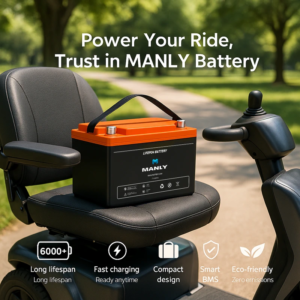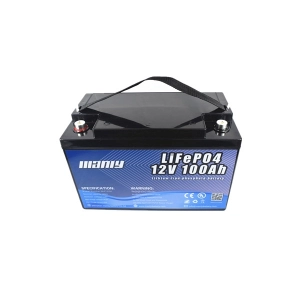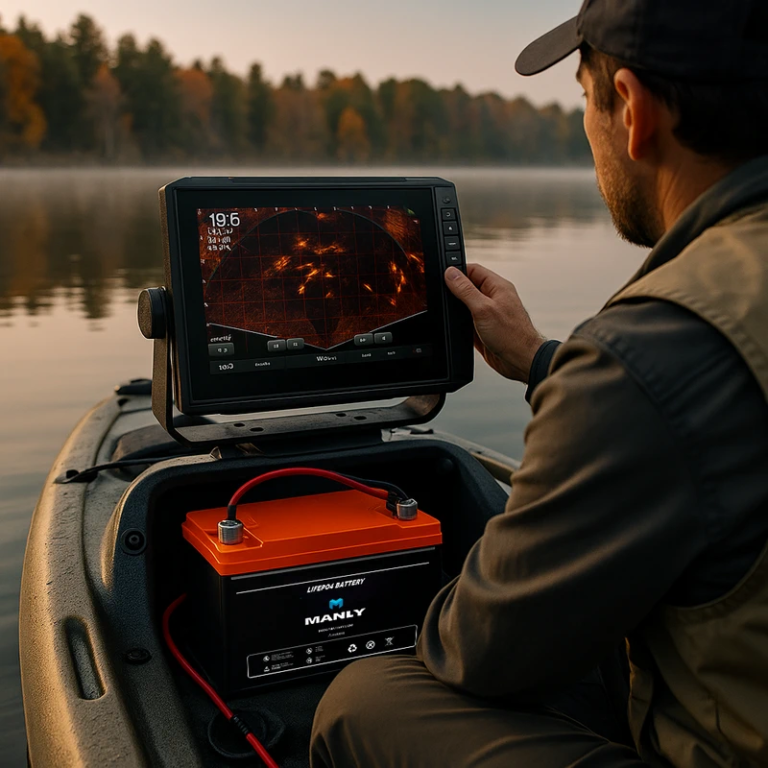Top 5 Batterieauswahl für Ihren elektrischen Roller im Jahr 2023
Inhaltsverzeichnis
- Top 5 Batterieauswahl für Ihren elektrischen Roller im Jahr 2023
- 1. Mastering der Grundlagen: das Was und warum von Elektromutroller -Batterien
- 2. entmystifizierende Batteriespezifikationen: Ein Scooterist -Leitfaden zu Batteriebegriffen
- 3. Die enthüllten Batterien: Ein tiefes Eintauchen in verschiedene Batterie -Typen
- 4..
- 5. Kapazitätsbewertung: Wie viel Saft hat Ihr Roller wirklich?
- 6. C -Rate: Das Geheimnis der Batterieausflussrate Ihres Rollers entwirft
- 7. Tipps, um Ihren elektrischen Roller lange Akkulaufzeit zu halten
- 8. Warnschilder: Erkennen einer ausfälligen Elektroroller -Batterie, bevor es zu spät ist
- 9. Vorbeugung von Batteriebränden von Elektro -Rollern: Sicherheitsmaßnahmen, die Sie wissen müssen
- 10. Fazit
1. Mastering der Grundlagen: das Was und warum von Elektromutroller -Batterien
In der Welt der Elektroroller ist es wichtig, die Schlüsselrolle von Batterien zu verstehen. Sie sind nicht nur Stromquellen - sie diktieren die Leistung, die Geschwindigkeit, die Reichweite und die Lebensdauer Ihres Rollers. Nun, was genau ist eine elektrische Roller -Batterie? Einfach ausgedrückt, es ist das Kraftpaket Ihres Rollers. Es speichert und entlädt Strom, um Ihre Fahrt in Bewegung zu halten. Vom Strom des Motors bis hin zur Beleuchtung der Scheinwerfer ist die Batterie für jede elektrische Komponente Ihres Rollers von entscheidender Bedeutung. Ohne ihn ist Ihr E-Scooter nur ein Deck mit Rädern. Warum ist die Art der Batterie so kritisch? Es ist einfach - nicht alle Batterien sind gleich gebaut. Sie finden verschiedene Typen wie Blei-Säure, Nickel-Metal-Hydrid, Li-Ion undLiFePO4auf dem Markt. Jeder Typ enthält seine Vor- und Nachteile und beeinflusst die Leistung Ihres Rollers. Betrachten Sie für Beispiel die Chemie hinter diesen Batterien. Blei-Säure-Batterien sind möglicherweise erschwinglicher, sie sind jedoch schwerer und haben eine kürzere Lebensdauer. Andererseits sind Lithium batterien wie Li-Ion oder LifePO4 leicht und lang anhaltend, aber sie kosten im Voraus mehr. Es ist normalerweise in Amperestunden (AH) bezeichnet. Eine höhere Kapazität bedeutet eine längere Fahrt für Ihren Roller. Eine 20AH-Batterie bietet also in der Regel eine längere Reichweite als eine 10AH-Batterie, wobei alle anderen Faktoren gleich sind. In Zusammenfassung ist die Batterie Ihres E-Scooters mehr als nur eine Energiespeichereinheit. Es wirkt sich auf die Leistung, die Reichweite und die Langlebigkeit Ihrer Fahrt aus. Ein grundlegendes Verständnis seiner Arbeiten kann Ihnen helfen, Ihr E-Scooter-Erlebnis zu optimieren. Wir werden in den folgenden Abschnitten tiefer in verschiedene Batterie -Typen eintauchen. Bleiben Sie dran!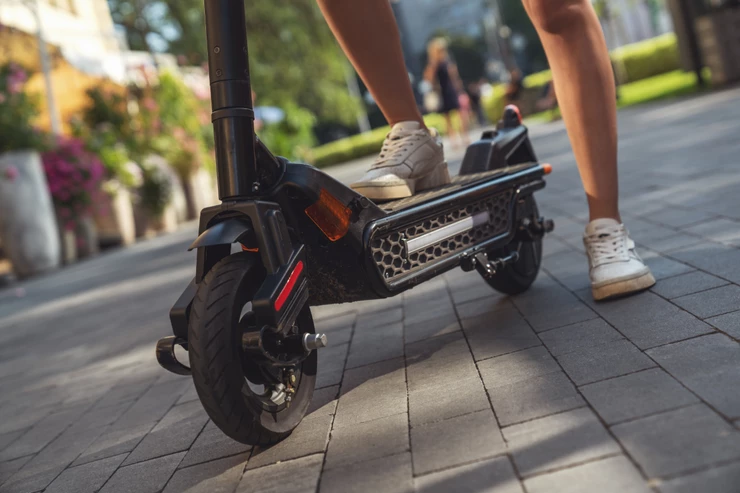
2. entmystifizierende Batteriespezifikationen: Ein Scooterist -Leitfaden zu Batteriebegriffen
Navigating the world of battery specifications can feel like learning a new language. But don't fret, in this section, I'll help demystify some common battery terms for the avid scooterist.Let's start with 'voltage'. You may have seen e-scooter batteries described as 36V, 48V, or 52V. 'V' stands for volts, the unit of voltage. Simply put, voltage is the 'push' that gets the electricity flowing. It's like water pressure in a hose. The 36v in an electric scooter battery 36v tells us its voltage is 36 volts. Higher voltage means more power, leading to a faster scooter.What about 12 volt battery for electric scooter? This is a lower voltage battery. It delivers less power, but it's lighter and cheaper. It's often seen in smaller, less expensive scooters.Now, 48v lithium battery for electric scooter. This one packs a lot of power. Its high voltage is perfect for faster, more powerful scooters. Yet, it's still relatively light and compact, thanks to its lithium construction.Next up is 'capacity', usually measured in Ampere-hours (Ah). It's a measure of how much energy a battery can store. For instance, a 10Ah battery can theoretically deliver a current of 10 Amps for an hour. Higher capacity usually equals a longer ride range, all other factors being equal.You might also come across the term 'C rate'. It refers to the rate at which a battery is discharged relative to its maximum capacity. A 1C rate means the discharge current will drain the entire battery in one hour.Let's talk about 'Voltage Sag'. It's the temporary drop in a battery's voltage under load. You might notice your e-scooter slowing down a bit when climbing hills, even though the battery isn't low. That's voltage sag in action!One more critical term is 'Battery Management System' or BMS. It's like the battery's personal assistant, ensuring it charges and discharges safely and efficiently. A good BMS can prolong your battery's life and keep it in top shape.Finally, you may hear about 'Swappable Batteries'. These are exactly what they sound like - batteries you can swap out. This feature is becoming increasingly popular in e-scooters. It allows you to extend your range by carrying a spare, fully-charged battery.So, there you have it. A quick guide to common battery specifications. Armed with this knowledge, you'll find it easier to understand battery specs and make informed choices when buying or maintaining your e-scooter. But the learning doesn't stop here. Stay tuned as we dive deeper into specific battery types in the next section!3. Die enthüllten Batterien: Ein tiefes Eintauchen in verschiedene Batterie -Typen
3.1 Blei-Säure-Batterien:
As we delve into our battery exploration, let's first turn our attention to the age-old contender in the realm of electric scooter power: Lead-acid batteries.Rooted in an age-old technology, lead-acid batteries are quite similar to the battery you'd find under the hood of your car. They're known for their reliability, making them a common choice for a wide array of rechargeable battery applications. Need a burst of power to start a car? A lead-acid battery gets the job done. However, they're not without their shortcomings.The most glaring downside of lead-acid batteries lies in their energy density, which is markedly poor. Simply put, energy density tells you how much energy a battery can store relative to its weight. In this arena, lead-acid batteries disappoint. They are notably heavy for the amount of energy they contain. In comparison, Li-ion batteries (a category we'll delve into later) outperform lead-acid batteries by about tenfold in terms of energy density.So, where do we often find these hefty power storages? They're commonly used in golf carts, forklifts, and, notably, kids' e-scooters. Companies like Razor offer inexpensive electric scooters for children powered by lead-acid batteries.Yet, their appeal lies in their price tag. These batteries are relatively inexpensive, which often makes them an appealing choice, especially for lower-priced electric scooters designed for young riders.In a nutshell, while lead-acid batteries bring reliability and a friendly price tag to the table, their poor energy density and weighty nature make them less than ideal for more demanding electric scooter applications. Keep reading as we dive into more efficient, lightweight alternatives in the upcoming sections.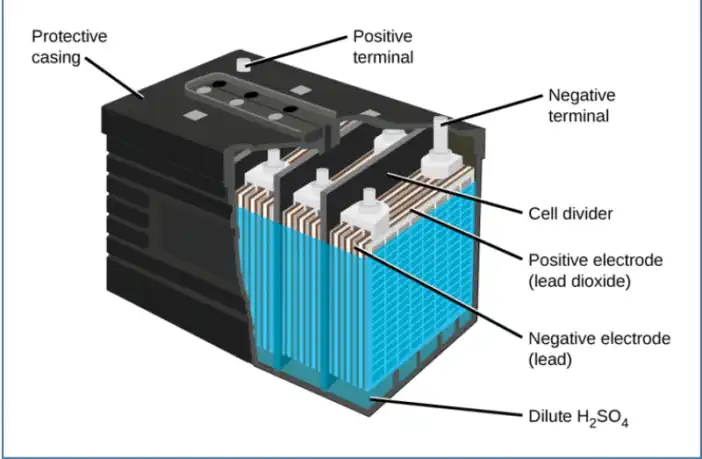
3.2 Nickel-Metall-Hydrid-Batterien:
Shifting gears, let's now explore the realm of Nickel-Metal Hydride batteries, the under-the-radar workhorses of the electric scooter world.As a newer technology compared to lead-acid, Nickel-Metal Hydride batteries (commonly referred to as NiMH) provide a significant upgrade in performance. They're characterized by better energy density, meaning they pack more power into a lighter package. This trait alone makes them a go-to choice for those desiring a less weighty ride without compromising on power.But here's the kicker: NiMH batteries boast a lower self-discharge rate. In other words, they hold their charge longer when not in use. This makes them an appealing choice for scooter enthusiasts who don't ride daily but want their scooters ready to roll when they are.On the environmental front, NiMH batteries score some points, too. They contain no toxic heavy metals (like lead or cadmium), making them a more eco-friendly option. This attribute aligns well with the environmentally conscious ethos that drives many electric scooter users.However, it's not all sunshine and roses. Nickel-Metal Hydride batteries tend to be more expensive than their lead-acid counterparts. Additionally, they have a shorter overall lifespan and can exhibit a "memory effect" — a phenomenon where batteries lose their maximum energy capacity when repeatedly recharged after being only partially discharged.In summary, Nickel-Metal Hydride batteries offer a valuable step up from the dated lead-acid technology, providing enhanced energy density and longer charge retention. While they command a higher price and may not last as long, their environmental friendliness and performance perks make them a worthy contender in the world of electric scooter power sources. Stay tuned as we delve into even more advanced battery technologies in the sections to come.3.3 Li-Ionen-Batterien:
Als nächstes haben wir die großen Spieler im Electric Scooter Battery Game -Li-Ionen-Batterien. Renowned for their high-energy density, Li-Ion batteries pack a punch, delivering considerable power while maintaining a relatively light footprint. This optimal energy-to-weight ratio is a significant factor in their popularity among electric scooter enthusiasts.The versatility of Li-Ion batteries is another feather in their cap. This technology hosts a variety of chemistries, each having its unique characteristics and strengths. From Lithium manganese oxide (LiMn2O4) and Lithium manganese nickel (LiNiMnCoO2) to Lithium iron phosphate (LiFePO4), each variant presents a different trade-off between performance and safety.Now, let's crunch some numbers. Compared to technologies like Ni-Cd (Nickel-Cadmium) or Ni-MH (Nickel-Metal Hydride), Li-Ion batteries can deliver three times more energy. This high output, coupled with their excellent longevity, ensures that they stay power-ready for a long haul, making them an attractive choice for frequent riders.Maintenance? With Li-Ion batteries, you can strike that off your list. These batteries are low-maintenance, freeing you from the need for scheduled cycling to retain battery life. Moreover, they're immune to the memory effect, a notorious issue with some battery types where repeated partial charge-discharge cycles lower the overall capacity.However, it's not a complete smooth sailing with Li-Ion batteries. They are prone to overheating and can incur damage at high voltages. Hence, they require built-in safety mechanisms to keep internal pressure and voltage in check, occasionally adding to their weight and marginally limiting performance.Li-Ion batteries also age over time, losing capacity and starting to falter after several years. Yet, considering their overall performance and longevity, many users see this as a worthwhile trade-off.To sum it up, Li-Ion batteries, despite a few hiccups, offer a solid, efficient, and reliable power source for electric scooters, keeping you on the move with minimum fuss. As we proceed further, we'll explore another exciting addition to this league - the game-changing LiFePO4 batteries.3.4 Lithium -Mangan (INR, NMC):
If you're seeking a safe, high-capacity choice for your electric scooter battery, Li-Ion batteries, particularly those with INR chemistry, are a top choice. These batteries have cemented their place as favorites among electric scooter enthusiasts and for good reason.The INR, or Lithium Manganese Nickel, battery chemistry is hailed as one of the safest. These batteries don't just offer high capacity; they also provide high output current. Thanks to the presence of manganese, the internal resistance of these batteries is reduced, allowing for high current output while maintaining cooler temperatures. As a result, this reduces the chances of thermal runaway and fire, contributing to the overall safety of your electric scooter. It's no wonder that quality electric scooters like the WePed GT 50e and various Dualtron models are equipped with INR batteries.But safety isn't the only upside of these batteries. Li-Ion batteries with INR chemistry also shine in terms of energy density and longevity. With a higher energy density, these batteries can store more power, extending the range of your electric scooter ride. In terms of longevity, these batteries have a longer lifecycle compared to cobalt-based batteries, all the while being more cost-efficient.More so, INR batteries exhibit superior thermal stability than their LCO counterparts, adding another layer to their safety profile. This makes them a common choice not just for electric scooters, but also for power tools and e-bikes.However, every coin has two sides, and INR batteries are no exception. Despite their plethora of benefits, they do have a minor shortcoming. These batteries deliver a slightly lower voltage than cobalt-based batteries. But for many scooterists, the high capacity, safety, and cost-efficiency of INR batteries more than makeup for this small drawback.In conclusion, if you're looking for a high-flying favorite in the realm of electric scooter batteries, Li-Ion batteries, particularly those with INR chemistry, certainly make the cut. Their blend of safety, power, and longevity offers an unmatched riding experience, helping you make the most of your electric scooter adventures.3.5 lifepo4 -Batterien:
LIFEPO4-Batterien drehen die Köpfe in der E-Scooter-Welt. Sie sind als das zukünftige Kraftpaket gefeiert. Warum? Nun, aus mehreren Gründen haben sie erstaunlich eine hohe Energiedichte. Das ist Tech -Gespräch für "Sie speichern viel Strom". Die Zahlen? Sie sind ungefähr 90-120 WH/kg. Das bedeutet, dass lange Fahrten, weniger Ladevorgänge. Zweitens haben sie einen beeindruckenden Lebenszyklus. Wir sprechen von 2000 bis 5000 Ladezyklen. Weit über ihre Konkurrenten hinaus. Was bedeutet das? Ihr E-Scooter läuft länger und stärker und gibt Ihnen meilenweit und kilometerlange glatte Fahrten. Probiert ist auch ein Faktor. Ja, sie sind teurer. Aber denken Sie daran, ihre Langlebigkeit bedeutet, dass Sie sie seltener ersetzen werden. Langfristig sparen Sie Geld. Und Zeit. Lastly, lass uns über Sicherheit sprechen. LIFEPO4 -Batterien haben eine ausgezeichnete thermische Stabilität. Es ist weniger wahrscheinlich, dass sie überhitzen und das Risiko von Batteriebränden verringern. Das ist ein großer Scheck für Sicherheit. In Zusammenfassung,LiFePO4-Batteriensind eine gute Wahl für E-Scooters. Sie bieten hohe Macht, lange Lebensdauer, Kosteneffizienz und Sicherheit. Die Zukunft sieht hell aus, wenn LifePO4 die Gebühr führt.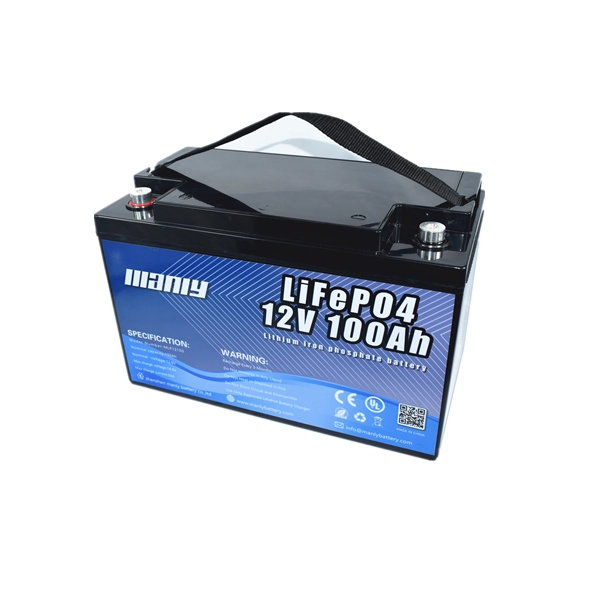
| Attribut | Blei-Säure-Batterie | NIMH -Batterie | Li-Ion-Batterie | INR (NMC) Batterie | LiFePO4 Akku |
|---|---|---|---|---|---|
| Energiedichte (Wh/kg) | 33-42 | 60-120 | 150-200 | 150-220 | 90-120 |
| Lebenszyklus | 500-800 | 500-1000 | 1000-2000 | 1000-2000 | 2000-5000 |
| Selbstentladungsrate (%/Monat) | 5 | 20-30 | 2 | 2 | 3 |
| C Rate | 1C | 1c-2c | 1c-2c | 2c-3c | 1c-2c |
| Nennspannung (v) | 12 | 1.2 | 3.6 | 3.6 | 3.2 |
| Nutzbare Kapazität (AH) | 7.5 - 20 | 2 - 9 | 2 - 3 | 2 - 3 | 10 - 100 |
| Kosten | $ | $$ | $$$ | $$$ | $$$ |
| Gesamtbewertung (Sterne) | ★★ ☆☆☆ | ★★★ ☆☆ | ★★★★ ☆ | ★★★★ ☆ | ★★★★★ |
4..
Das Batteriesystem Ihres Rollers enthält einen hinterhältigen Täter, der möglicherweise nur Ihre Stromversorgung entwässert: Spannungssack. Aber was genau ist es? Wenn Sie Ihren E-Scooter starten und eine Nachfrage auf die Batterie stellen, sinkt die Spannung sofort. Es ist wie ein Mini -Stromausfall, und wenn Sie Ihre Batteriespannung im Auge behalten, scheint es, als hätten Sie gerade einen bedeutenden Teil Ihrer Stromversorgung verloren. Aber noch nicht in Panik. Sobald die Last nachlässt, wird die Batteriespannung auf ihr reales Niveau zurückgezogen. Nur wenige Schuldige können hinter diesem Phänomen stehen. Es könnte der Energieschub sein, der für den Start des Motors, ein bisschen elektrischer Widerstand, Temperaturschwankungen oder sogar eine zwielichtige Komponente erforderlich ist. Das Abtropfen der Batterie in den letzten Tropfen kann auch Spannungssäure auslösen, da das Lithium in der Batterie darum kämpft, mit der Entladungsrate Schritt zu halten. Daher beschleunigt der Spannungsabfall, je länger Sie fahren. Aber seien Sie sicher, dass Ihre Batterie nur eine kleine Ausfallzeit benötigt. Wenn Sie Ihrem Scooter -Akku einige Ruhezeit geben, können Sie den wahren Spannungsniveau wiederherstellen. Wenn Sie das nächste Mal einen plötzlichen Einbruch an Kraft bemerken, denken Sie, dass es wahrscheinlich nur eine Spannungssack macht, die sein Ding macht.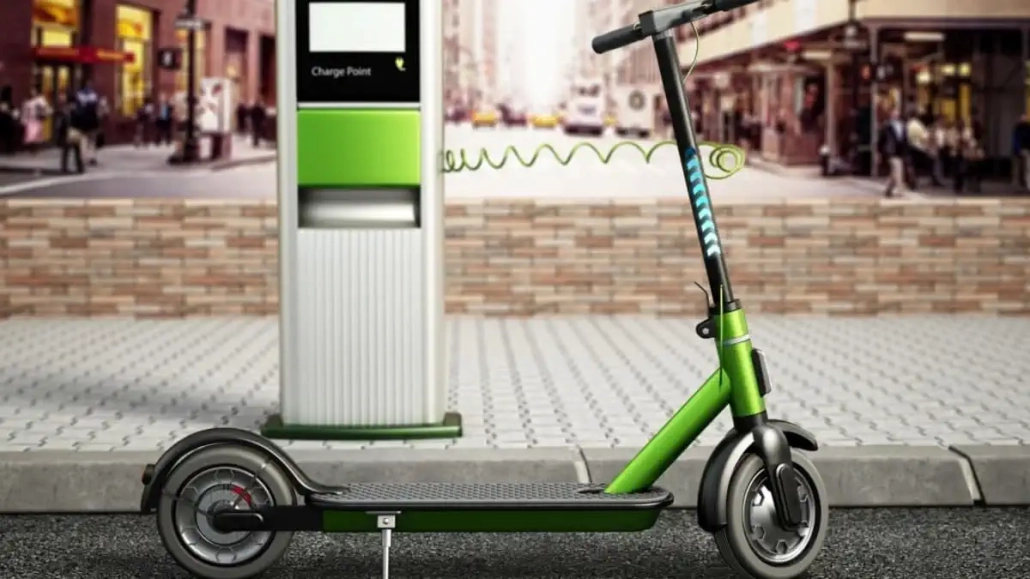
5. Kapazitätsbewertung: Wie viel Saft hat Ihr Roller wirklich?
Haben Sie sich jemals gefragt, wie viel "Saft" Ihr E-Scooter wirklich halten kann? Hier kommt die Kapazitätsbewertung ins Spiel. In Einheiten, die als Watt-Stunde (WH) bezeichnet werden, ist die Kapazitätsbewertung im Wesentlichen ein Maß für die Energie, die Ihr E-Scooter-Akku speichern kann. Stellen Sie sich das so vor: Eine 1 -WH -Batterie kann eine Watt Strom für eine volle Stunde lang aufrechterhalten. Und ja, Größe ist wichtig. Je höher die Watt-Stunde-Bewertung der Batterie ist, desto größer ist die Energiekapazität. Dies bedeutet, dass Sie Ihren Roller für eine größere Reichweite mit Strom versorgen können, vorausgesetzt, die Motorgröße ist konstant. Ein durchschnittlicher Roller beispielsweise hat normalerweise eine Kapazität von rund 250 WH, die in etwa 10 Meilen mit einer Durchschnittsgeschwindigkeit von 15 Meilen pro Stunde übersetzt wird. Aber was ist mit den großen Waffen? Nun, einige der Hochleistungs-E-Scooters können Tausende von Wattstunden in Kapazität rühmen und sie befähigen, bis zu 60 Meilen Entfernungen abzudecken. Wenn Sie also das nächste Mal den Akku Ihres Rollers überprüfen, denken Sie daran - es geht nur um die Watt -Stunden!6. C -Rate: Das Geheimnis der Batterieausflussrate Ihres Rollers entwirft
Willkommen zu einem weiteren faszinierenden Merkmal der Batterie Ihres E-Scooters-der C-Rate. Bei dieser mysteriösen kleinen Zahl dreht sich alles um Geschwindigkeit. Insbesondere wie schnell Ihre Batterie lädt oder entlädt. Eine Batterie mit einer C-Rate von 1C kann in einer Stunde vollständig entsaftet werden. Einfach genug, oder? Eine C-Rate von 2C bedeutet nun, dass Ihre Batterie in nur einer halben Stunde vollständig aufgeladen ist. Auf der anderen Seite müsste eine C-Rate von 0,5 ° C zwei Stunden lang vollständig aufgeladen werden. Es geht jedoch nicht nur um das Laden. Die C-Rate kann uns auch über die Entladungsgeschwindigkeit der Batterie informieren. Angenommen, Sie haben eine voll aufgeladene Batterie mit einer Kapazität von 10AH. Bei einer C-Bewertung von 1C kann es eine Stunde lang 10 Ampere liefern. Wenn Sie mit einer C-Rate von 0,5 ° C arbeiten, erhalten Sie über zwei Stunden 5 Ampere. Und für eine 2c -Rate? Sie würden eine halbe Stunde lang 20 Ampere erhalten. Insbesondere die C-Rate Ihrer Batterie bietet wertvolle Einblicke in die Geschwindigkeit, mit der sie seine gespeicherte Energie liefern oder auffüllen kann. Es ist ein ziemlich nützliches Wissen, das man unter dem Gürtel haben kann, nicht wahr?7. Tipps, um Ihren elektrischen Roller lange Akkulaufzeit zu halten
Riding your electric scooter is fun, no doubt about it. But keeping your electric scooter battery time longer? That's where the real satisfaction comes in. When it comes to Li-ion batteries, like those powering your e-scooter, you're looking at about 300 to 500 charge/discharge cycles before seeing a noticeable drop in capacity. Put in perspective, that's a whopping 3,000 to 10,000 miles on an average scooter!Now, don't panic when you hear "drop in capacity". It doesn't mean your battery's on its last legs. Rather, you might notice a 10 to 20% decrease in capacity that gradually worsens over time. Thanks to modern battery management systems, you won't need to stress too much over prolonging electric scooter battery time. But if you're all about efficiency, there are a few things you can do to stretch those cycles even further.Avoid storing your scooter with the charger plugged in or when it's fully charged for long periods. Similarly, don't let your scooter's battery get too low. Most manufacturers recommend storing your scooter with about 50% charge, and topping it up to this level now and then for extended storage. Extreme temperatures, both hot and cold, are no friends to your battery. Stick within 32 to 113 degrees Fahrenheit for optimal performance. And finally, consider charging at a lower C-rate, which means charging your battery slower relative to its max capacity.By taking a little extra care, you can go the extra mile - or a few thousand - on your electric scooter. Enjoy the ride!

